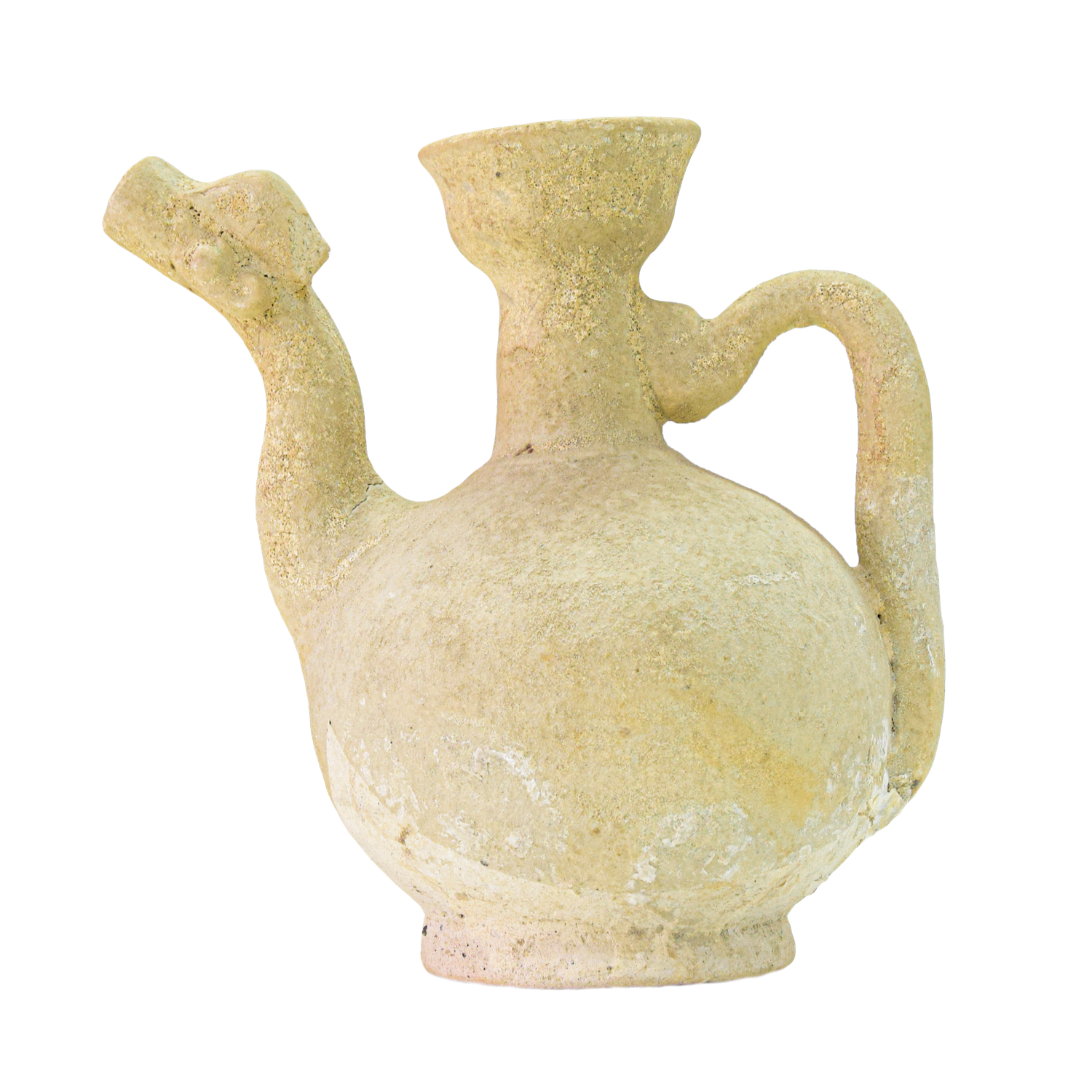
Seafaring & Beliefs
Sailing Southeast Asia’s waters on the monsoonal winds was perilous, with the constant risk of being wrecked. To safeguard their journeys, crews often sought to imbue their ships with magical protection.
One example was found at the 14th–15th century Rang Kwian shipwreck site in Thailand, where archaeological evidence suggests a bronze mirror was embedded in the hull of the ship for good fortune.
Objects found on shipwrecks also provide insights into the lives of people at sea and their beliefs. The kendi (water jug) with a swan-head motif was discovered at the 16th century Klang Aow shipwreck site, also in Thailand. It was the only kendi found at the site amongst 10,000 ceramics, suggesting it was a personal possession of a crew member. The swan motif is believed to hold symbolic meaning in Brahmanism, in which the swan serves as the vehicle of the god Brahma. The kendi may have been used for ceremonial or religious purposes.
Symbols meant to protect ships and their crews are often evident in ship design. In the whaling village of Lamalera, Lembata, Indonesia, the maddi (decorated sternpost) is the most symbolic part of the Sili Tena fishing vessel. The maddi’s carvings, featuring a spiral sun, flowers, and the sacred heart with sword and anchor motifs, reflect a melding of ancestral and Catholic traditions.
In Southeast Asia, several deities are worshipped to protect sailors and coastal communities. One such figure is Tian Siang Sing Bo, the Goddess of the Sea. Originating from Fujian, southern China, she is celebrated as a saviour of sailors and a guardian figure for many coastal Peranakan Chinese communities. Temples (klenteng) dedicated to her also served as cultural centres, as seen in Java, where wayang potehi was performed at klenteng for both ritual and social occasions.
Theme image: Gaja Minah, the mythical 'elephant fish' of Bali, by Jeffrey Mellefont.



.png)
